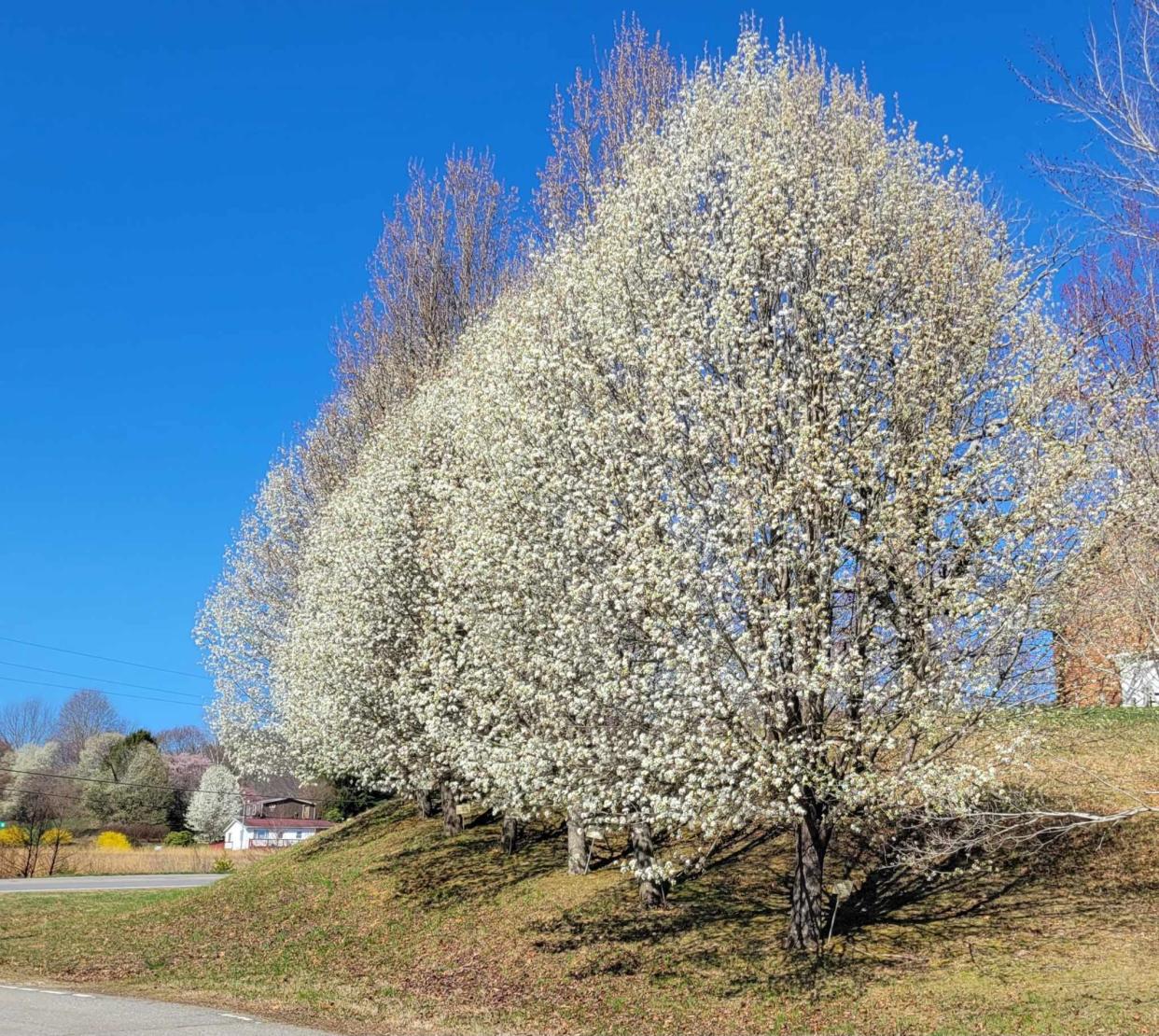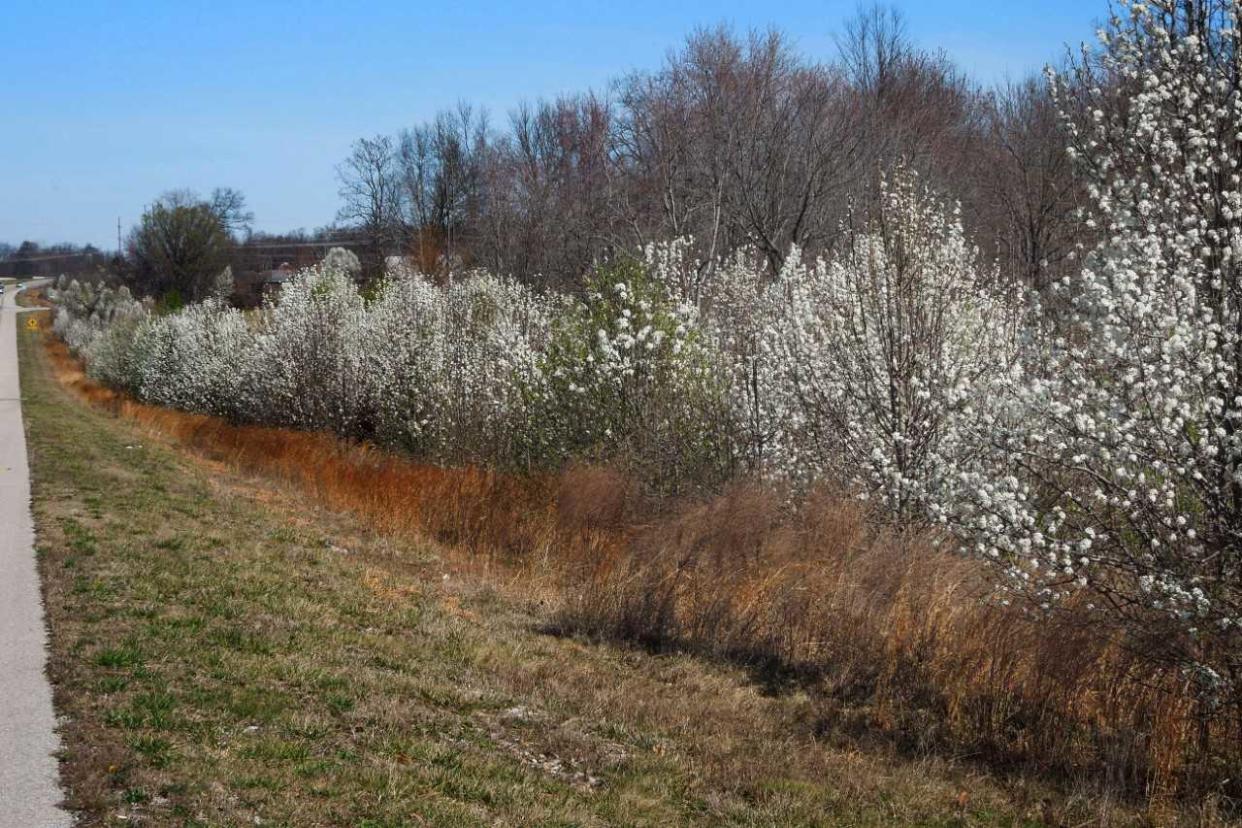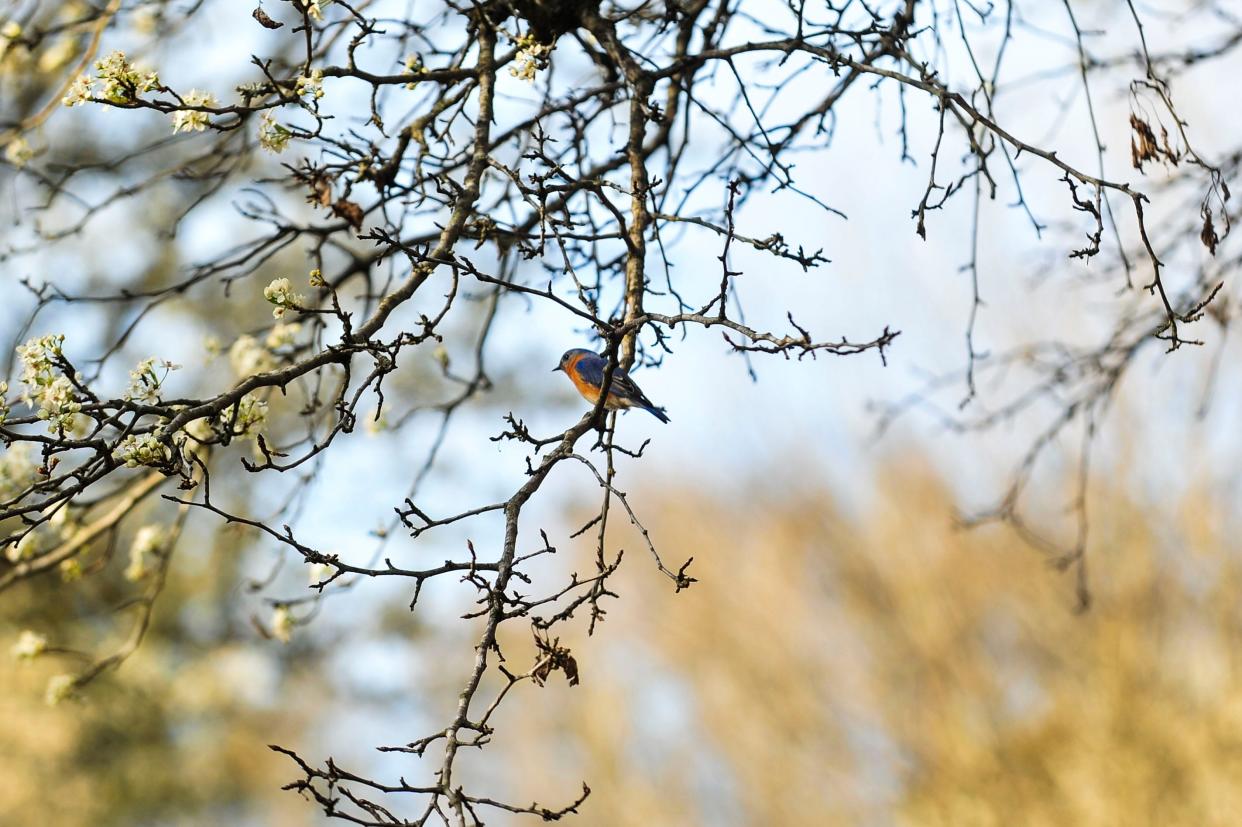Bradford pear trees look pretty but smell like rotten fish. Should Texas ban them?
Sure, they're pretty and their white blooms are a harbinger of spring. But they also omit an unpleasant odor reminiscent of rotten fish — and that's not even their biggest problem.
Bradford pear trees are a common sight throughout Texas, often planted by residents and developers for the very, very brief aesthetic appeal they offer across three weeks — a month, at best — around springtime.
Yet, they bring along a host of significant problems to native ecosystems and are even listed on the Texas Invasives database. Many states have already banned the invasive species and offer programs with incentives to remove the tree, a move that began just over a year ago when Ohio took the lead in January 2023.

"Bradford was introduced in Maryland as the be-all-end-all and the perfect landscape tree," said Vikram Baliga, recognized as 'The Plant Prof' on social media, in a recent reel on Instagram. "It is tolerant of a lot of soils, a lot of water conditions, a lot of climates and a lot of places ... And while they are objectively pretty attractive a couple of weeks out of the year, all of those things that made them really good in the landscape made them ecological nightmares (in the U.S.). It turns out this tree is incredibly invasive among a suite of other problems."
Here's a list of them.
More: It's officially spring in Texas, but winter has been getting warmer and shorter. Here's the data
Bradford pear trees overcrowd native plants

Bradford pear trees are a variety of the Callery pear, which was introduced to the U.S. from Asia in the early 1900s in an attempt to fight the fire blight of the common pear — a disease that affected common pear trees.
As an introduced species, the Bradford pear's expansion has been "incredibly prolific," said Baliga, who is also an assistant professor of practice in the Davis College of Agricultural Sciences and Natural Resources at Texas Tech University.
While Bradford pear trees and cultivars of the Callery pear are typically self-infertile, meaning they cannot produce seeds within the same variety or on the same plant, they readily cross-pollinate with other varieties of pear, Baliga said. This results in fruit production in subsequent generations of trees that are fertile.
"They have taken over rights of way of roadsides, and they have forced out native species," Baliga said in the video. "They cause a lot of problems."
What do I plant now? Shorter Central Texas winters mean that gardeners can start earlier
Bradford pear trees forage doesn't support native pollinators
Beyond the issue of their overabundance and displacement of native plants, Bradford pear trees are largely ineffective — mostly useless — in supporting native pollinators.
While Bradford pear trees do offer decent early-season forage, according to Baliga, native bees and butterflies tend not to utilize them. Instead, they primarily attract honeybees.

That would be slightly more acceptable if honeybees weren't also nonnative species. Introduced to the U.S. in the 1600s, essentially as livestock, honeybees pose a risk of outcompeting native bee populations for forage and spreading disease. And because they have a broader diet than native bee species, honeybees can also contribute to the reproduction and spread of invasive plant species, such as the Bradford pear tree — perpetuating an endless cycle of fostering growth among invasive species populations.
"Native bees, in general, don't really love these," Baliga said in the video. "Their fruits are small, hard, inedible, and even though they are forged on by some birds and other wildlife, they're carried off. Then, the seeds, when they're fertile, will drop all over the place. And you get, guess what? More Bradford pears."
2024 migration map: When do hummingbirds arrive in Texas? Want to attract them?
Bradford pear trees smell really, really bad
Over the years, there have been numerous comparisons made to the pungent odor of the Bradford pear tree — and they're universally gross.
"The flowers have been described as fish, or rotting meat or something else that I can't talk about on here without getting in trouble," Baliga joked, noting that viewers could quickly learn in the comments.
The worst part is that the smell lingers for as long as the flowers do.
More: These invasive trees smell like rotting fish and kill plants. State bans want Bradford pears gone.
Bradford pear trees can cause a lot of damage
While it's commonly known that Bradford pear trees emit a foul odor and compete with native plants, they also cause significant damage to private properties.
Bradford pears are notorious for their weak wood and poorly formed branch angles, Baliga explained. The narrow angles between branches create what's known as weak "crotch angles," which means that branches can become trapped, leading to potential breakage.
Additionally, the wood itself is inherently weak, making it unsuitable for withstanding ice storms, or even high winds. While it may be favorable for woodworking, it poses risks to the tree's structural integrity during extreme weather conditions.
"These trees will fall apart, they've been known to crash into cars and fences and your dog, if it's too slow," Baliga said. "So while this is objectively a reasonably attractive tree, it is not worth the ecological problems that it causes and the problems to the urban and home landscape.
"Friends don't let friends plant Bradford pears. Just don't do it," Baliga added.
More: Where is the best place to see Texas bluebonnets in 2024? Check out our map
Will Texas ban the Bradford pear?
The species is not yet prohibited by the Texas Parks and Wildlife Department. And so far, it appears that there has been little discussion of the invasive species by state lawmakers.
Which states have banned the Bradford pear tree?
States that have banned selling, planting or propagating the trees:
States considering a ban on Bradford pear trees:
This article originally appeared on Lubbock Avalanche-Journal: Bradford pear trees are an invasive species. Should Texas ban them?
